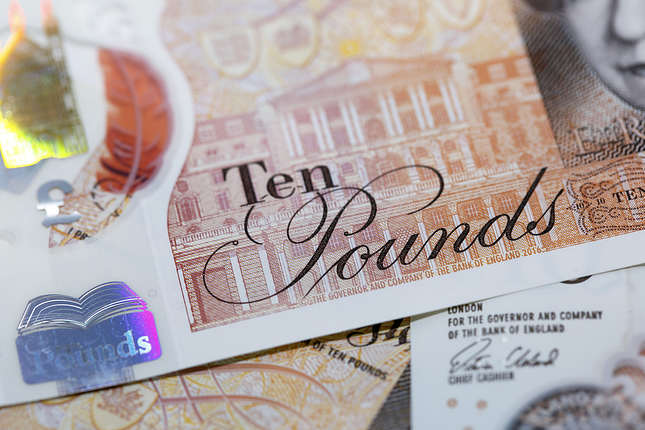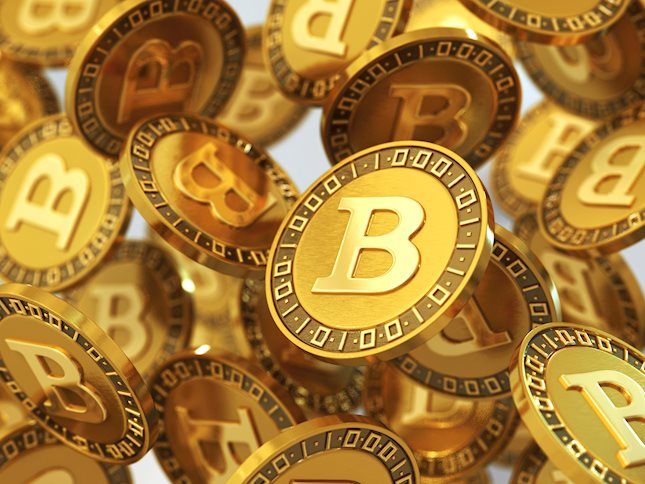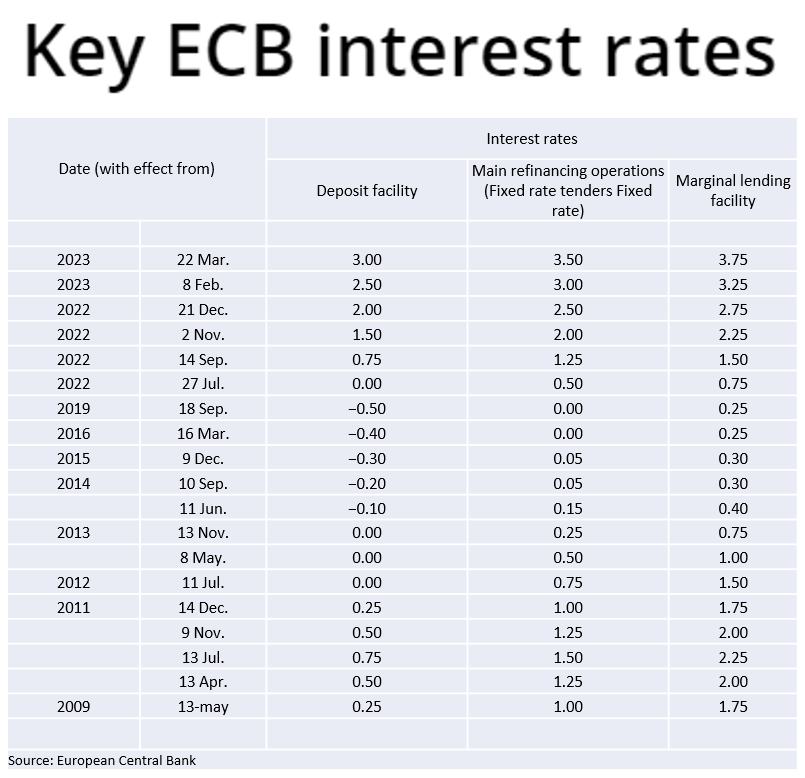- After the RBA and the Fed, it will be the turn of the ECB.
- No doubts about a rate hike, but will it be 25 or 50 basis points?
- EUR/USD: Is a 50 bps rate hike a ticket toward the 200-week SMA?
On Thursday, May 4, the European Central Bank (ECB) will announce its monetary policy decision at 12:15 GMT. Later, at 12:45 GMT, ECB President Christine Lagarde will hold a press conference.
Back in March, the ECB raised interest rates by 50 basis points despite ongoing turmoil in the banking sector. At that moment of uncertainty, the central bank abandoned its forward guidance, not because of falling inflation, but due to uncertainty over how the banking crisis would unfold. The ECB said back then: "The Governing Council is monitoring current market tensions closely and stands ready to respond as necessary to preserve price stability and financial stability in the euro area. The euro area banking sector is resilient, with strong capital and liquidity positions."
The ECB's message was clear: we need to keep raising rates because inflation is too high, and we need to see how the banking shock impacts. We don’t know how financial markets will be in a month.
More than a month later, banking developments are reaching headlines again, but so far, only in the US. Inflation has come down only modestly, and economic growth during the first quarter was minor in the Eurozone. Equity markets have remained resilient; however, many market participants forecast a global recession for the second half of the year, projecting rate cuts from many central banks, including the Federal Reserve (Fed).
Eurozone inflation reaccelerated in April from 6.9% to 7%, giving the hawks at the ECB more arguments for strong action. Core inflation eased from 5.7% to 5.6%, still far from the 2% target. The good news is that food inflation declined for the first time in 18 months. The persistently high inflation warrants more tightening from the ECB, particularly after the Bank Lending Survey showed credit standards continued to tighten during the first quarter, but no faster than in the fourth quarter.
On Thursday, it could be a hawkish 25 bps hike or a dovish 50 bps hike. A new rate hike decision will likely be unanimous, but policymakers will probably differ on the magnitude. The magnitude will be critical for the initial reaction. A 50 bps hike should boost the Euro sharply across the board, while a 25 bps hike could have a mixed impact, depending on what the statement says. The net outcome will depend on the size of the hike and also on what the ECB sees going forward. A cautious hawkish explicit forward guidance seems a likely scenario, which should keep the Euro supported in the short term. A more cautious approach, on the contrary, could weaken the common currency.
EUR/USD: Trend is up
The divergences between a Fed that has stopped raising rates and the ECB that still has work to do on rates have been supporting the EUR/USD. This is partially reflected in the yield spread between US Treasuries and German bunds.
The Euro outperformed this week despite risk aversion. That could continue to be the case, but at some point, the US Dollar could become a safer haven than the euro. However, for Thursday, the risk for Euro bulls is a cautious tone. A hawkish 25 bps or a 50 bps hike could trigger more gains in EUR/USD. However, it is the Federal Open Market Committee (FOMC) on Wednesday and the jobs report (NFP) on Friday, events that would add noise to price action.
A push higher in the EUR/USD could take the pair toward the 200-week Simple Moving Average (SMA), which awaits at the 1.1200 area. The last time the pair traded above this line was back in October 2018. On the contrary, at 1.0900 is the 100-week SMA; a close below would point to a deeper correction, probably to the 20-week SMA at 1.0780.
Information on these pages contains forward-looking statements that involve risks and uncertainties. Markets and instruments profiled on this page are for informational purposes only and should not in any way come across as a recommendation to buy or sell in these assets. You should do your own thorough research before making any investment decisions. FXStreet does not in any way guarantee that this information is free from mistakes, errors, or material misstatements. It also does not guarantee that this information is of a timely nature. Investing in Open Markets involves a great deal of risk, including the loss of all or a portion of your investment, as well as emotional distress. All risks, losses and costs associated with investing, including total loss of principal, are your responsibility. The views and opinions expressed in this article are those of the authors and do not necessarily reflect the official policy or position of FXStreet nor its advertisers. The author will not be held responsible for information that is found at the end of links posted on this page.
If not otherwise explicitly mentioned in the body of the article, at the time of writing, the author has no position in any stock mentioned in this article and no business relationship with any company mentioned. The author has not received compensation for writing this article, other than from FXStreet.
FXStreet and the author do not provide personalized recommendations. The author makes no representations as to the accuracy, completeness, or suitability of this information. FXStreet and the author will not be liable for any errors, omissions or any losses, injuries or damages arising from this information and its display or use. Errors and omissions excepted.
The author and FXStreet are not registered investment advisors and nothing in this article is intended to be investment advice.
Recommended Content
Editors’ Picks

EUR/USD stabilizes near 1.0400 after upbeat US data
EUR/USD consolidates daily recovery gains near 1.0400 following the release of upbeat United States data. Q3 GDP was upwardly revised to 3.1% from 2.8% previously, while weekly unemployment claims improved to 220K in the week ending December 13.

GBP/USD drops toward 1.2550 after BoE rate decision
GBP/USD stays on the back foot and declines toward 1.2550 following the Bank of England (BoE) monetary policy decisions. The BoE maintained the bank rate at 4.75% as expected, but the accompanying statement leaned to dovish, while three out of nine MPC members opted for a cut.

Gold approaches recent lows around $2,580
Gold resumes its decline after the early advance and trades below $2,600 early in the American session. Stronger than anticipated US data and recent central banks' outcomes fuel demand for the US Dollar. XAU/USD nears its weekly low at $2,582.93.

Bitcoin slightly recovers after sharp sell-off following Fed rate cut decision
Bitcoin (BTC) recovers slightly, trading around $102,000 on Thursday after dropping 5.5% the previous day. Whales, corporations, and institutional investors saw an opportunity to take advantage of the recent dips and added more BTC to their holdings.

Bank of England stays on hold, but a dovish front is building
Bank of England rates were maintained at 4.75% today, in line with expectations. However, the 6-3 vote split sent a moderately dovish signal to markets, prompting some dovish repricing and a weaker pound. We remain more dovish than market pricing for 2025.

Best Forex Brokers with Low Spreads
VERIFIED Low spreads are crucial for reducing trading costs. Explore top Forex brokers offering competitive spreads and high leverage. Compare options for EUR/USD, GBP/USD, USD/JPY, and Gold.

-638187261416392233.png)